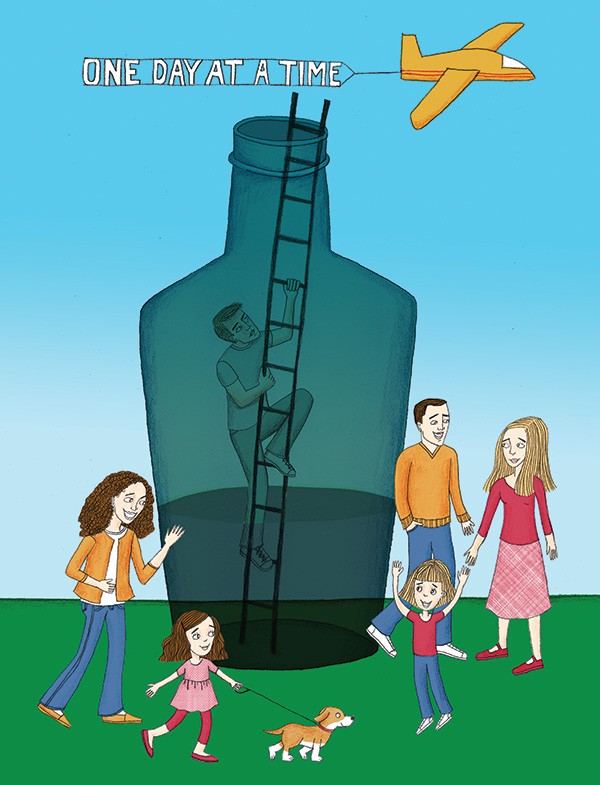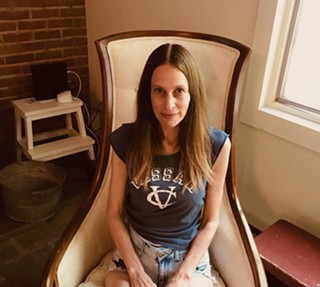For addiction medicine specialist Mark Willenbring, MD, no two cases are exactly alike. There are the middle-aged women who tip back five or six drinks a day; most of the time they're functional and nobody knows they have a problem. There are the young people hooked on opiates, seeking a swift way to nix their habit in this age of instant gratification. For a growing number of addicted adults, the substance of choice is a prescription drug like Vicodin, often available from ill patients who sell their surplus on the side for easy cash. And then there are those with severe alcohol dependency who will consume a liter of vodka a day, or the equivalent of 24 drinks; if they keep going, they're headed down a deadly road toward cirrhosis of the liver or pancreatitis.
Once a substance user recognizes that he has a problem and wants to get well—which can take months or years—the route to recovery can be long, bumpy, and riddled with backtracking detours. The risk of relapse looms large: Most in-patient rehab centers in this country report that only about 40 percent of their "graduates" remain clean a year later. There's a spectrum of severity, but addiction is deadly: Every year in the US, about 120,000 people will die from it. That's 350 people a day. Recovery, experts agree, isn't about finding a cookie-cutter, quick-fix solution. Says Willenbring, "There are about as many ways to recover as there are people who need to."
The (Tough) Love Approach
Jim and Sue Cusack, co-founders of Villa Veritas, an inpatient rehab clinic in Kerhonkson, have been in the business of addiction recovery since the days before it was really a business—and certainly not a money-making one. In his recently self-published memoir, Trouble Is a Gift: A Story of Addiction, Recovery, and Hope (S and J Publishing, 2013), Jim, 85, recounts the rough-and-tumble years of his teens and early 20s as a hard-core alcoholic. He had his first drink at age four at one of his family's Irish weddings; snuck wine in the sacristy when he was an altar boy; boozed his way through a stint in the Army; and hit bottom when his first wife booted him out. The road to sober took him 12 years. "There wasn't a field back then; there wasn't any success with drunks," says Sue. "Jim vowed that if he could get himself together he would help other alcoholics." His prayers were answered (both Jim and Sue are devout Catholics) when he was given a 30-bed facility. Sue was one of his early clients—though it was a few years after when they fell in love and married. Later, Jim worked with alcoholic New York City police officers in what was perhaps the city's first employee-assistance program. Years after, Jim and Sue purchased the Catskills resort that would become Villa Veritas.
Since it opened in the early 1980s, the Villa, as Jim and Sue call it, has grown to an 85-bed rehab facility that draws heavily on the Twelve Steps, the philosophy behind Alcoholics Anonymous (AA). The structure of their 28-day program has changed very little over the past three decades. First patients "dry out" and detox, then they attend Twelve Step meetings and have group and individual therapy. "A lot of fads and trends have come and gone, but it's the basics that work," says Sue—though in recent years Villa Veritas has added yoga, arts and crafts, exercise, nutrition, and nicotine reduction. There are also an indoor and an outdoor pool. It might sound like a spa, but to Sue, it's school. "It's a very structured daily program that consists of getting discipline back into our lives. It's kind of like going to college for a month, a crash course on how to live a sober life." In a way, it's also a bit like church: An AA brand of love and spirituality is a big component.
Inpatient rehab is infamously expensive, but the Cusacks say they keep their program affordable with insurance coverage and payment plans. "We'll work with anyone who wants to get well," says Sue. Since relapse prevention is such a big concern, Villa Veritas sets people up with outpatient programs and alumna in their area, and strongly recommends regular attendance in a Twelve Step program. "Here, people are immersed in a family; they feel the power of the group and they start to like themselves. If they go home and don't follow up, they go back into the isolation, and the drinking or using can start again," says Sue. Addiction medicine, or the use of prescription meds to ease withdrawal symptoms, is not something you'll see at Villa Veritas. ("Abstinence is the way to go, we feel. Chances are they'll be uncomfortable, but that's okay. No pain, no gain.") In the end, it's people helping people, says Sue. "I'm 45 years recovered and proud to be. No doctor or psychiatrist gave that to me."













